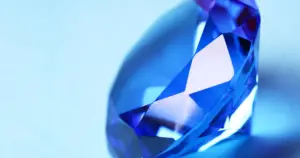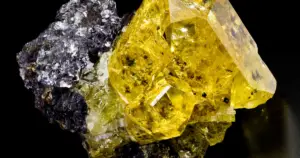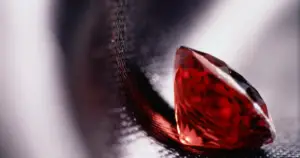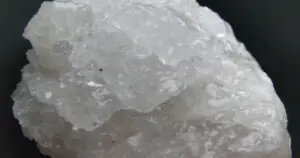Cornflower Blue Sapphire Meaning: Healing Properties, Benefits and Uses
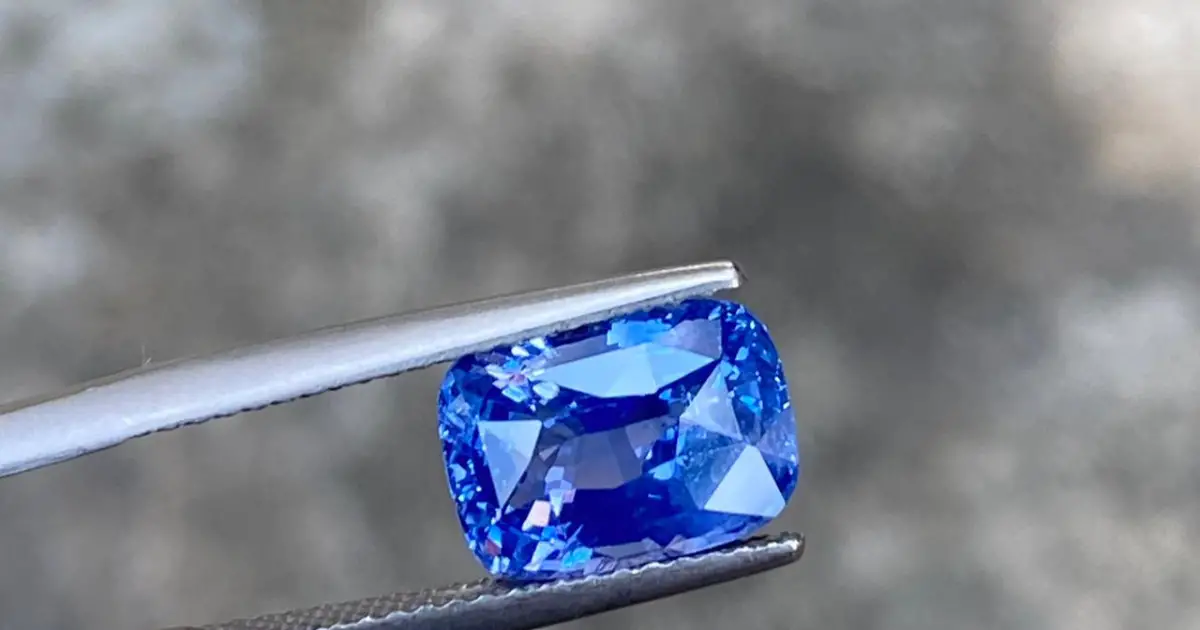
Cornflower is one of the few flowers with a unique style and saturation to emphasize the purity of its colour. It has a vibrant shade that ranges from light to medium in intensity and is situated on the colour wheel more closely to its neighbouring purple tone than it is to its adjacent green tone.
The Dutch Baroque painter Johannes Vermeer is credited with popularizing this colour in the 1600s. Today, the term “Vermeer blue” is also used to describe the dazzling shade of one of the most expensive sapphires in the world. This colour, which is also known as “Prussian blue,” happens to be Germany’s official national colour. The pigment was first developed in Berlin in the latter half of the 18th century.
So, this deep blue colour of the Cornflower is similar to the colour of the gemstone Cornflower Blue Sapphire, and due to their remarkable rarity and almost mythological charm, these gemstones are only found in very few locations.
To know all about the crystal of Sapphire too, click here.
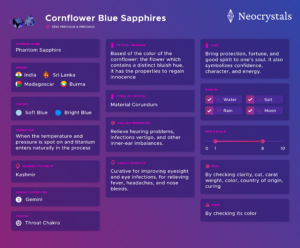
Table of Contents
What is Cornflower Blue Sapphire?
Cornflower Blue Sapphires, “The finest Blue Sapphire,” are among the most desirable varieties of blue sapphires. These Sapphires are often referred to as “Ceylon sapphire” because it is mined on the island of Ceylon, which is now known as Sri Lanka.
Due to their vivid blue colour, they are often compared to the now-extinct Kashmir blue sapphire and are opposed to the Royal blue sapphire, and their enormous size and high quality as a natural sapphire make them unusual, but their unique blue hue increases their value even further. In addition to being extremely rare, the deep, intense blue colour of these sapphires is what makes them so desirable and unique, and they are incredibly precious. They also have been represented as having a “blue velvet” texture.
In addition to Blue, other colours of Sapphire are also there, which include yellow or golden Sapphire (depending on how bright the hue is), pink Sapphire, Green Sapphire, Purple Sapphire, orange sapphire, black Sapphire, and White Sapphire.
If we compare the Blue Sapphire with the Cornflower Blue Sapphire, so it is necessary for a sapphire to be bare of any secondary shades for it to be classified as Cornflower Blue Sapphire rather than simply blue, and the stone must have excellent saturation and the appropriate tone, being neither excessively dark nor excessively bright.
In case you are interested to learn about Star Sapphire, read here.
How to Identify a Cornflower Blue Sapphire?
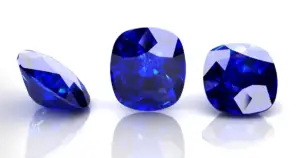
Sapphire’s blue colour can look very different to the naked eye depending on how radiant Cornflower Blue Sapphire is and how bright the light is where it is being looked at.
The best lighting is soft natural light on a sunny day when the stone is not in direct sunlight. It’s also important not to look at the stone under a blue sky because it can make the stone’s colour look more robust than it needs to be.
Here are some other ways to determine whether a Cornflower Blue Sapphire is authentic or not:
- We should look for flaws or inclusions in the stone.
- Perform a breath test and then purchase a certified Sapphire.
- When trying to identify a fake sapphire, it is very important to look for air bubbles, perform the scratch test, and shine light through the Sapphire.
- Always make sure to inquire with jewellers about the sapphires they are selling to determine the specific type of gem that it is.
When searching for a high-quality sapphire, we always have to check these six things (C6), which are:
- Colour:
The most precious Cornflower Blue Sapphires have a colour that ranges from a muted blue to a vibrant, intense blue, and they can be any shade of blue in between.
Make sure that the stone does not include any secondary colours like purple or green. We should check this carefully before buying Cornflower Blue Sapphire.
- Clarity:
Inclusions in Sapphire are typically very easy to spot. Nevertheless, the types with the highest value are those that are eye-clean and possess immaculate transparency and clarity.
It is important to be aware that a variant of Cornflower Blue Sapphire contains rutile inclusions, resulting in an appearance that resembles stars.
- Cut:
Because it highlights the stone’s natural colour and beauty, the gemstone’s cut is of the utmost importance. As a result of its scarcity and high cost, Cornflower Blue Sapphire is cut with great care by cutters who aim to waste as little of the rough material as possible.
The vast majority of Cornflower Blue Sapphires are faceted and cut into a range of shapes, some examples of which are oval, round, princess, emerald, and cushion.
- Carat Weight:
Carat Larger Cornflower Blue Sapphires can command very high prices due to their rarity and size. Similar to the price of diamonds, the price of these sapphires increases exponentially by the carat. Weight should be checked properly while purchasing it.
- Country of origin:
Additionally, the introduction of synthetic or laboratory-grown varieties of sapphires has led to an increase in the value of these gemstones. These synthetic versions, which are popular in certain areas of the market, further strengthen the necessity for individuals looking for more genuine natural sapphires to pay closer attention to the country of origin of the sapphires they are purchasing.
Countries with a long history of trading sapphires are, statistically speaking, less likely to be attracted by the mass-market appeal of cheaper, synthetic alternatives to sapphires.
- Curing:
The process of warming the stone results in an improvement of the stone’s natural qualities, which is referred to as the “curing” that takes place during this type of treatment.
The purpose of the heat treatment process is to, under carefully controlled conditions; make these attributes even better than they already were.
The person who has bought may be taken aback to learn that curing sapphires, also known as heating them, dates back thousands of years.
Even ancient people were aware that heating a gemstone accentuates the properties it already possessed at that time. As a result, one could run into jewellers who claim that the gemstones they sell have undergone “conventional” heat treatments. However, this is frequently where people start to get confused. Because of this, the process of curing sapphires has morphed into a few different forms in more recent times. A significant number of them are, at best, unethical.
Also, while the purchase of a Cornflower Blue Sapphire; we should also concentrate on the following two things:
- Cornflower Blue Sapphire Cuts
- Cornflower Blue Sapphire Shapes
-
Cornflower Blue Sapphire Cuts
It emphasizes the stone’s natural colour and beauty, and the gemstone’s cut is the most important.
Because Cornflower Blue Sapphire is so unique and costly, cutters work diligently to eliminate any waste that isn’t absolutely necessary from the rough. The majority of Cornflower Blue Sapphires are cut in the shape of faces.
-
Cornflower Blue Sapphire Shapes
The Cornflower Blue Sapphire can be fashioned into several different shapes, such as an oval, a round, a princess cut, an emerald cut, and a cushion cut.
Where is Cornflower Blue Sapphire Found?
Kashmir, Sri Lanka, Myanmar, and Madagascar are the most common places from which Cornflower Blue Sapphires are mined. And in each of these forenamed locations, the Cornflower Blue Sapphires from Kashmir are one of the most incredible qualities, which is why they control the highest prices.
Cornflower Blue Sapphire Stone Meaning
The name sapphire originates from either the French word “Saphir,” the Latin word “sapphirus,” or the Greek word “sappheiros.” This means “blue stone” in all languages.
In addition, some people think this is the connection between the crystal and the planet Saturn from where the name sapphire originated.
Cornflower Blue Sapphire Meaning in Ancient Lore and History
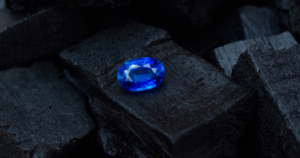
Throughout history, blue sapphires have earned a significant number of metaphysical beliefs. Another explanation for why high-quality stones like these are in such high demand among people of various cultural backgrounds.
On the other hand, Cornflower Blue Sapphires do not have any purpose other than what is commonly believed to be true for all good colours of blue sapphires. It is said, however, that the majority of these ethereal advantages might be anticipated to materialize out of thin air. Therefore, cornflower blue and brilliant blue is at the top of the list if we wear them partly for spiritual objectives.
Saturn is the most dreaded planet in astrology, associated with the sapphire blue gemstone. Therefore, it is thought to provide protection against all forms of ill will and disaster.
Talking about history, the Blue Sapphire is a precious gemstone that has been prized for its beauty, adored by many people, and revered for many years.
Cornflower Blue Sapphire is traditionally considered to be the birthstone associated with those who were born in the month of September. The colour blue is immediately brought to mind whenever somebody mentions the word “Sapphire.”
Cornflower Blue Sapphire Crystal Properties
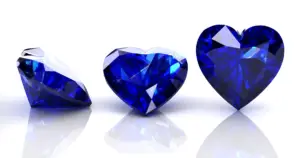
Some of the Cornflower Blue Sapphire Crystal properties are:
- Cornflower Blue Sapphire crystals are beautiful stones that are thought, in more recent times, to have the ability to free those who wear them from any kind of spiritual confusion, mental tension, depression, and unwanted thoughts.
- They also symbolize the re-establishment of harmony and equilibrium within a person’s own body.
- They bring together one’s spiritual, mental, and physical planes and achieve mental and emotional calmness and a sense of serenity.
- Even today, these precious stones continue to serve as a powerful symbol of a person’s strength, power, kindness, and proper determination.
Since the beginning of recorded history, sapphires have been connected with the concepts of remorse, purity, and religiosity. In many different cultures, they have been seen as a symbol of justice and have also been used to represent sincerity. And because of this reason, the enticing colour is evenly distributed throughout each and every gem, and every one of the gems possesses a divine beauty.
In addition to this, the Cornflower Blue Sapphire is one of the most popular and well-known:
- Because of its healing Properties
The healing properties of Cornflower Blue Sapphire assist us in doing the following:
a) Improving communication with our spirit guides.
b) Establishes a link between us and our more developed selves.
c) Encourages the development of our psychic awareness and reflexive skills
d) Encourages a connection with the vital life force of the universe.
e) Helps the undesirable bodily sensations that frequently accompany the process of spiritual ascension and awakening.
- As a birthstone
The gem known as Sapphire is commonly regarded as a representation of “success” or “prosperity.”
It will bring about a life that is abundant in both riches and happiness. And the majority of people do wear them so that they can experience these things in life.
Additionally, it helps us become more accepting of the fact that the events in our lives are all a part of a greater plan.
- As a Chakra Theory
Sapphires have remedial powers and assist in opening the third eye, which enables one to gain greater insight.
They also open the throat chakra, making communicating with other people much simpler and easier to avoid misunderstandings and disagreements that remain unresolved.
What are the Uses of Cornflower Blue Sapphire?
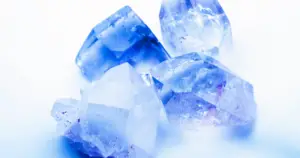
- It is one of the rear gemstones that help raise self-affirmation and improve self-denial and inferiority complexes.
- The Cornflower Blue Sapphire is known for its ability to boost self-assurance in its owner when they wear it.
- These, also for a long time, have been interpreted as symbols of mental concentration, inner sight, and psychic sensitivity.
- It is also believed that the colour sapphire blue, which is a deep, almost black blue, has a connection to the heavens and can bring about divine favour and omen.
- The jewel is flooded with the history and legends of various religions and cultures worldwide.
- In the worlds of antiquity and the Middle Ages, blue sapphires were thought to represent the height of divine faith and hope. They were also considered to have protective qualities, the ability to bring about spiritual insight, and the ability to bring good fortune.
Even today, these precious stones continue to serve as a potent symbol of a person’s strength, power, kindness, and sound judgment.
Caring for Cornflower Blue Sapphire
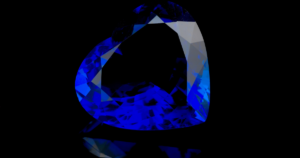
In general, sapphires are low-maintenance gemstones that can be easily cleaned in the comfort of one’s own home.
The Cornflower Blue Sapphire can be made clean by following these steps:
- To polish the Sapphire, we should make use of a dry cleaning cloth.
Let’s quickly polish the Sapphire before cleaning it with soap and water. We can eliminate some of the streaks and tarnishes that are less difficult to remove, making the overall cleaning process more manageable.
- Put some dish soap in a few drops of warm water in a small bowl, and then fill the bowl with warm water.
We need to ensure that the water is not too hot or too cold; rather, it should be at a temperature that is in the middle, and there is sufficient water in the bowl so that the sapphires can be dipped entirely in it.n
It is important to remember that virtually any dish soap or cleaning detergent will do the trick. However, check to see if the soap we’re using contains a degreasing agent before we start using it.
- After that, put the Sapphire in the bowl of warm, soapy water, and let it sit there for a couple of minutes.
This preliminary soaking will assist in removing and releasing some of the residues that are still present on the gemstone. During the scrubbing process, there will be a much lower possibility of the Sapphire being scratched due to this action.
- Use a clean, damp cloth to give the Sapphire a light scrubbing.
After allowing the Sapphire to soak in the solution, use a cloth or a toothbrush with soft hairs to give it a light scrubbing to remove the stubborn smudges and dirt.
After the initial soak, the majority of the residue ought to come off relatively quickly. If the residue or smudges on the sapphires are more long-lasting, we will need to soak them for a more extended period.
- After that, give the Sapphire a quick rinse in clean water and pat it dry with a soft cloth.
After we have taken the Sapphire out of the bowl containing the detergent, we will put it through a cycle in which it will be washed in hot water to remove any remaining dirt or soap residue.
To prevent water stains, which are more likely to occur when, cleaning with hard water, ensure that the Sapphire is completely dried using a piece of dry jewellery or polishing cloth.
There are some questions arise:
When to Cleanse Cornflower Blue Sapphire
When we notice that dust has accumulated above the surface of our Cornflower Blue Sapphire or when we notice that the Sapphire is losing its luster, we can clean the Sapphire. Or when it does not produce the expected results.
The process of cleaning Sapphire is extremely straightforward, and we may complete it without leaving the comfort of our own homes.
How to Recharge Your Cornflower Blue Sapphire
- We should use black salt mixed with distinct water in a bowl and put that Cornflower Blue Sapphire in that bowl in a dark room for twenty-five to thirty minutes so that its effects can be evaluated and improved upon. Remember that the bowl should be kept when there is no moon; using the Sapphire seems to produce better results. Or the time of the full moon, then confine it to that specific area exclusively.
- Put some clean cow’s milk in a bowl, then put Cornflower Blue Sapphire in the bowl, and store it in a place where there is no light. The milk should be kept in a dark place only. The Sapphire needs to be dipped in the bowl of milk in the correct manner.
- If you want better results, we should keep the Sapphire in the new shirt for a whole day and then wash the Cornflower Blue Sapphire in the morning.
- Cornflower Blue Sapphire Activation process
Before putting on the Cornflower Blue Sapphire, we must first clean it with purified milk, and only after that can we put it on. The activation procedure is fairly straightforward.
How much is Cornflower Blue Sapphire worth?
The value of a Cornflower Blue Sapphire can fluctuate significantly depending on several factors, like the gemstone’s cut, the number of blemishes, carat weight, and clarity, as well as its country of origin and the type of remedy it was subjected to stabilize its colour.
The rounder or oval-shaped blue sapphires are less expensive than square or other custom shapes because of the stone wastage that is incurred during the cutting process.
The colour of sapphires can be improved through the use of heat treatment, which also eliminates colour zoning. The price of a Cornflower Blue Sapphire stone in India can range from 1.25 lakh per carat (approximately $2320) all the way up to 4 lakh per carat (approximately $6200) and even higher. This is not an exact rate, and prices are subject to change based on the amount of demand and the market’s profit.
In general, Cornflower Blue Sapphires cost a higher price on the market because they are more lustrous and polished than other types of sapphires.
Cornflower Blue Sapphire Impact
Cornflower Blue Sapphire is a gemstone that belongs to the corundum mineral family and is famous for its incredibly valuable blue hue.
Because it is believed to be the most potent and fastest-acting gemstone in Vedic astrology, the person who wears this gemstone will enjoy instant prosperity, popularity, and success in their life. It won’t make a difference what they decide to do with their lives; this will always be satisfied.
Does Cornflower Blue Sapphire make a good jewelry stone?
Undoubtedly, jewellery crafted from Cornflower Blue Sapphire is of the highest quality. Because of this, many people use it as a stone in jewellery, such as a ring or a necklace, which gives them a stunning look.
People still choose to purchase them despite the fact that their cost is higher than that of other stones because of their magnificent look and the additional benefits they provide to one’s health.
Cornflower Blue Sapphire is Real vs Fake
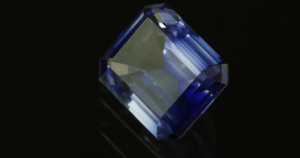
How fake it appears depends on the perspective from which we view it. Suppose we are looking for the most authentic natural untreated Cornflower Blue Sapphire. It is difficult to find in that case as all the sapphires have been heated, diffusely treated, glass filled, or synthetically created.
But in general, the glass-filled sapphires that are on the market and the synthetic Sapphire that was sold to us as natural Sapphire are all faked sapphires.
Sapphires that have been filled with glass started as natural sapphires that were in a condition that made them unsellable, such as having numerous cavities, partying plains, or fractures. These sapphires can be bought in large quantities for significantly reduced prices. After that, the cracks and holes are stuffed with lead glass so that they are not visible to the naked eye.
This treatment is typically reserved for more expensive blue sapphires and rubies, such as those with a significant price rate. Cornflower Blue Sapphires are second after the diamonds in terms of their outstanding hardness and strength, fascinating beauty, and spectrum of colours; yet, they are not as rare as diamonds.
The vast majority of people are under the impression that Blue is the only colour that can be achieved using Sapphire. But the reality is that sapphires may be found in all seven colours of the rainbow, with blue being the rarest and most valuable of the bunch.
Summary of Cornflower Blue Sapphire
| Name of Crystal | Cornflower blue sapphires |
| Precious | Yes |
| Semi-Precious | Yes |
| Other Names | Phantom Sapphire |
| Origin(s) | Kashmir (India), Ceylon (Sri Lanka), Madagascar, and Burma (Myanmar). |
| Color(s) | Soft blue to a vivid, bright blue |
| Formation | When the temperature and pressure is spot on and titanium enters naturally in the process |
| Majorly Found at | Kashmir |
| Zodiac Suited for | Gemini |
| Chakra | Throat Chakra |
| Crystal Meaning | Properties to regain innocence |
| Types of Crystal | Material corundum |
| Healing Properties | Relieve hearing problems, infections vertigo, and other inner-ear imbalances. |
| Health Benefits | Curative for improving eyesight and eye infections, for relieving fever, headaches, and nose bleeds. |
| Uses | Bring protection, fortune, and good spirit to one’s soul. It also symbolizes confidence, character, and energy. |
| Goes in Water? | Yes |
| Goes in Salt Water? | Yes |
| Goes in Rain Water? | Yes |
| Goes in Moon Water? | Yes |
| Moh’s Scale | 8-1 |
| Real | By checking Clarity, cut, carat weight, color, country of origin, curing |
| Fake | By checking its color |
FAQs
Are Cornflower Blue Sapphires valuable?
Yes, Cornflower Blue Sapphires are worth buying. It is unique due to its great size and high quality as a natural sapphire, and its distinctive blue pigment raises its worth even further.
This Sapphire’s dazzling, glowing blue makes it exceptionally rare, precious, and unique.
Where can I find Cornflower Blue Sapphire?
The most typical locations where Cornflower Blue Sapphires are mined are Kashmir, Sri Lanka, Myanmar, and Madagascar.
What is the rarest sapphire Colour?
The Padparadscha is an extremely rare pink and orange stone and is the rarest Sapphire.
However, the blue Kashmir varieties of Sapphire are the most expensive ones.
Can Cornflower Blue Sapphire go in the water?
Yes, there is no harm to blue Sapphire when it goes in the water.
How do you clean a Cornflower Blue Sapphire?
It is very easy to clean Cornflower Blue Sapphire by following these steps:
- We should use a dry cleaning cloth to polish the Sapphire in order to bring out its lustre.
- In a small bowl, combine a few drops of dish soap with a few tablespoons of warm water, and then fill the bowl with additional warm water.
- After that, place the Sapphire in the bowl and allow it to sit in the bowl for a couple of minutes.
- Give the Sapphire a quick cleaning with a clean, wet cloth to remove any surface dirt.
- After that, give the Sapphire a speedy washing in some fresh water and then pat it dry with a gentle cloth.
